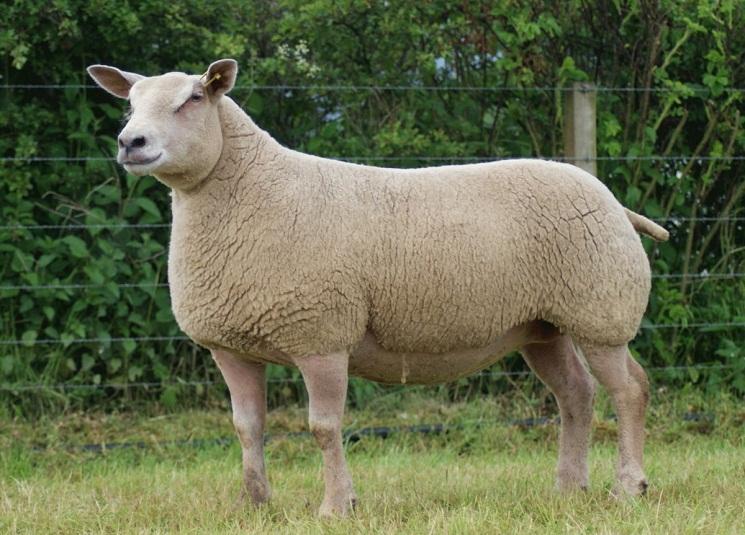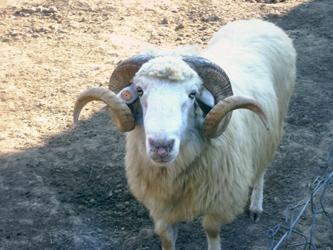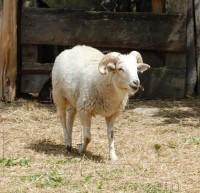Cheviot Sheep
The Cheviot Sheep is a dual-purpose breed, being raised primarily for meat and wool. This breed gets its name from a range of hills of the same name in north Northumberland and the Scottish Borders. A distinctive feature of the breed is that both male and female Cheviots are in constant demand for breeding purposes. Even to this day, the rams have proved to be good crossing sires for the production of lambs, especially with other hill breeds.
| Physical Characteristics | Stoutly-built body with sturdy, round legs, well-developed rumps and a short tail; head is broad with the face being characteristically white for both males and females |
| Temperament/Behavior | Alert, active |
| Wool Colors | White (both male and female) |
| Face Color | White |
| Horns | Yes (only rams can have) |
| Uses | Dual purpose: Wool and Meat Production (rarely for milk production) |
| Lifespan/Expectancy | 10-12 years |
| Weight (size) | Ram: 72-90 kg; Ewe: 55-72 kg (Average) |
| Height | 23 inches (average) |
| Popular/Special Qualities | Extremely hardy and versatile; low maintenance; high foraging ability; highly adaptable to climatic conditions; good for cross breeding |
| Diet | Stubble of cultivated crops, tree leaves, fodder, and grains |
| Country of Origin | Cheviot Hills (England and Scotland) |
| Distribution | Primarily in its native regions in the UK; also in Scotland, Wales, Ireland and SW England (especially Dartmoor and Exmoor); presently not much common in Australia, New Zealand, and the USA |
| Breed Registry/ Association/ Standards | The Cheviot Sheep Society |
History and Development
The cheviot sheep can be traced back to as early as 1372 when they were popular as a hardy breed. This breed developed around the border of Scotland and England and was adapted to the barren, windswept weather of the region. This adaptability was possible especially because of their robust features, easy lambing and fast growing abilities, matured mothering instincts.
In 1828, they were introduced to the United States from their homeland; and in 1938, exactly after a century, this breed was also introduced to Australia where they proved to be a success, being able to bear the wet weather of the winter months of Southern Australia. Not just that, they were also able to withstand the dry and scorching summers, foraging for food even during the scarcity of food.
Meat (Mutton) Production
The sheep has the reputation as a lucrative meat producer. They are very easy to rear and with little disadvantages in farming. Their structure is such that, they yield well-filled, meaty chops and broad loins of superior quality. They have a compact body with round legs that can produce plump, meaty cuts. They have soft, pink flesh that can delicately be trimmed having enough fat to keep the meat tender and juicy.
Wool Production
The fleece yielded by these sheep is long-stapled (3-5 inches) and dense with a micron measurement of 27.0 – 33.0 and a spinning count of 48-56. It is springy by type with a yield of 50 to 75%. Their wool once served as the base for the Border Tweed industry. It was lucrative enough. However, the industry has now relatively declined, and at present has marginal importance. The wool produced by these sheep was primarily used in the carpet and tweed sectors, as well as a small amount being used in the craft trade.
Interesting Facts
- Initially they were called ‘Long sheep’ and ‘White sheep’, with the latter being used since at least 1470.
- The name ‘Cheviot’ was first used by Sir John Sinclair.
- The Cheviot ewes can be found at altitudes as high as 3000 feet.












